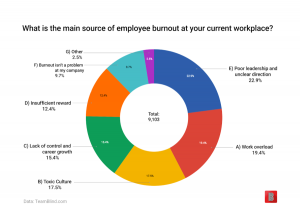August 21, 2016

When I first heard of Instagram Stories, my initial reaction was a mix of disgust and disapproval.
The feature, which was unveiled by the Facebook-owned company this month, allows users to post content that disappear within 24 hours. It’s a blatant, unapologetic copy of Snapchat, the photo- and video-sharing app popular among Millennials and Gen Z, allowing users to post photos and videos to a slideshow story.

Remarkably, Instagram Stories isn’t just inspired by Snapchat—it’s an exact, pixel-by-pixel replica. As usual, the Twitterverse was quick to add its snarky commentary.
“Facebook should just name its next product ‘Snapchat’,” said one tweet. “You either get acquired by Facebook or you live long enough to see your features copied by them,” added another.
Even Instagram CEO Kevin Systrom admitted that Snapchat deserves all the credit for this new feature.
Shortly after grumbling about Instagram Stories, I decided to do what any Millennial would: give it a try. I found it easy to use; I’m a casual Snapchat user, so the way the feature worked felt very familiar (maybe too familiar?) right away.
To my surprise, I found myself starting to like Instagram Stories. Just like many people, my network on Instagram is a lot bigger than my network on Snapchat, so I’m getting more views and engagement out of Instagram Stories. And because I already open Instagram frequently, I’m also viewing other people’s Stories more frequently.
Users jump on the Instagram stories bandwagon
I’m not the only one who has come around to Stories. Many Instagram users and brands are already giving Instagram Stories a try. Apparel giant Nike is an early adopter—and the company said it’s liking the feature.
“Instagram is really brand friendly, so that’s a huge opportunity,” said Nick Sheingold, associate director of strategy at Laundry Service, Nike’s social media agency. Nike generated 800,000 views in 24 hours for its first Instagram Story—a big number compared to the 66,000 record views it has gotten from Snapchat so far.
A flurry of big publishers—including CNN, the Food Network and Comedy Central—also quickly jumped on the Instagram Stories bandwagon. They’re “seeing solid early viewership numbers,” according to the Wall Street Journal.
What innovation pros can learn from Instagram Stories
Experts believe Instagram’s move could have a devastating impact on Snapchat. TechCrunch’s Josh Constine compared it to Facebook’s “Subscribe”—a feature, that, according to him, “neutered” Twitter. AdNews’ Lindsay Bennett said the move could halt Snapchat’s momentum.
By taking a page out of Snapchat’s playbook, Instagram has essentially declared a full-out war against the ephemeral-sharing app. Stories is already putting a dent in Snapchat’s remarkable growth.

For innovation pros, the Instagram-Snapchat saga offers a few notable lessons.
Innovate continuously—or risk becoming irrelevant.
Technological know-how is no longer a barrier to innovation today. In many ways, features have become commodities. Product management and other innovation pros need to relentlessly pursue innovation and deliver new features and products that keep users happy.
Be obsessive about design and user experience.
One of the biggest criticisms about Snapchat has to do with its not-so-intuitive design. As Bloomberg recently pointed out, the app has built its business by using design that confuses older people.
Snapchat’s design deficiency is something that Instagram has taken advantage of. Yes, Instagram Stories is a knock-off of Snapchat, but experts agree that it has better design. From viewing other people’s Stories to checking stats, Instagram made small—but important—tweaks to the user experience.
Test with your users.
Given the pace of innovation, it’s tempting to launch features in the market without testing them with customers or users. But doing so could lead to bad experiences—or, worse, features that offend people. This month, for example, Snapchat found itself in a small PR firestorm after users complained that its “Yellowface” filter was racist. The company had to pull the filters from the app. As Snapchat tries to fight back against Instagram’s aggressive moves, it can’t afford to rely on offensive gimmicks.
Innovation at the speed of a snap
The early success of Instagram Stories highlights the ephemeral nature of innovation today. We’re living in an age of endless disruption, an era when the features, products and experiences that give companies an edge can easily be copied or be improved on. Companies must relentlessly pursue innovation or risk finding themselves copied or outmaneuvered by their competitors.
Digital & Social Articles on Business 2 Community
(58)










